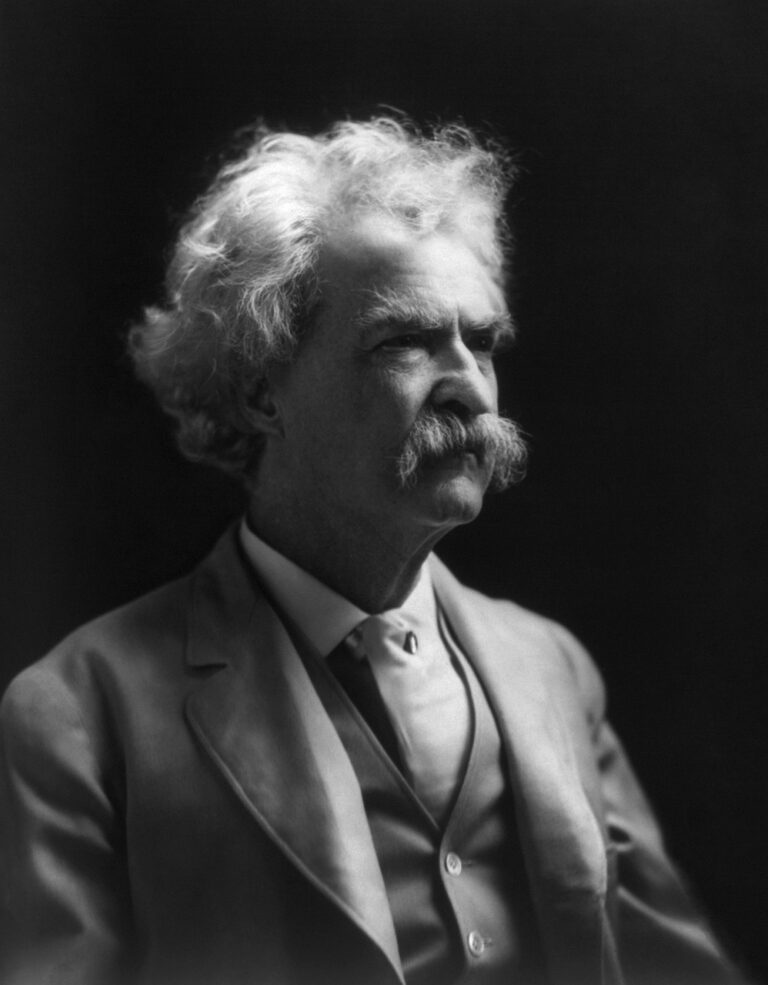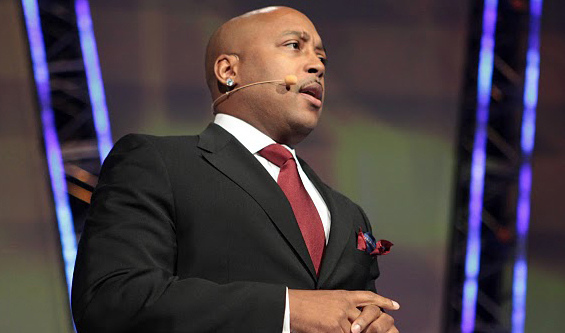Driving Success: Leadership Lessons from Mary Barra’s Journey at GM

Meet Mary Barra: The Trailblazing CEO Changing the Automotive Industry
Mary Barra is an accomplished businesswoman who has made history as the first woman to lead a major global automaker. As CEO of General Motors, Barra has been at the forefront of the company’s resurgence, steering the organization through crisis and implementing bold strategies to ensure its continued success. With over 40 years of experience at GM, Barra is a recognized thought leader and expert in leadership development. Her career trajectory and leadership style provide valuable insights and lessons for aspiring leaders in any industry.
Barra began her career at GM as an 18-year-old co-op student, working on the assembly line to help pay for her college tuition. She quickly rose through the ranks, holding various leadership positions in engineering, manufacturing, and human resources. In 2014, she was appointed as the CEO of General Motors, becoming the first woman to lead a major global automaker. Under her leadership, GM has made significant strides in innovation, sustainability, and social responsibility.
In this article, we will explore Barra’s leadership lessons and stories, delving into her early career, crisis management during the ignition switch scandal, her efforts to foster a culture of innovation, champion sustainability and social responsibility, and her approach to leading through uncertainty. By examining Barra’s leadership style and strategies, we can gain insights into how to lead with purpose, vision, and resilience.
Throughout her career, Barra has demonstrated that hard work, perseverance, and building relationships are critical ingredients for success. She started her career at GM as a co-op student, working on the assembly line and eventually becoming the company’s CEO. Barra’s rise to the top highlights the importance of hard work, taking advantage of opportunities, and cultivating relationships with colleagues and mentors.
One of the defining moments of Barra’s leadership was her handling of the ignition switch crisis at GM. In 2014, it was revealed that the company had knowingly sold vehicles with faulty ignition switches, which were linked to multiple deaths and injuries. As CEO, Barra took decisive action, recalling millions of vehicles, establishing a compensation fund for victims, and implementing sweeping changes to the company’s safety procedures. Her crisis leadership underscores the importance of transparency, accountability, and taking decisive action when faced with a crisis.
Barra is also known for her efforts to foster a culture of innovation at GM. She has encouraged collaboration, risk-taking, and diversity of thought, leading to breakthroughs in technology and design. Her leadership in this area demonstrates the power of leading by example and creating an environment that values innovation and creativity.
Barra is also a champion of sustainability and social responsibility. Under her leadership, GM has made significant progress in reducing its carbon footprint, increasing the production of electric and autonomous vehicles, and supporting communities in need. Her commitment to sustainability underscores the importance of aligning business goals with social and environmental concerns.
Finally, Barra’s leadership during the COVID-19 pandemic and other periods of uncertainty demonstrates the importance of flexibility, empathy, and communication. As the world faced unprecedented challenges, Barra guided GM through the crisis, prioritizing the safety of employees and customers while maintaining the company’s financial stability.
Mary Barra’s leadership style and strategies provide valuable lessons and insights for aspiring leaders in any industry. Her rise to the top, crisis management, innovation, sustainability, and leadership through uncertainty offer valuable examples of how to lead with purpose, vision, and resilience. By examining Barra’s leadership lessons and stories, we can learn from her experiences and apply these insights to our own leadership journeys.
Early career and rise to the top
Mary Barra’s early career at GM provides valuable lessons for aspiring leaders in any industry. From her start as a co-op student on the assembly line to her rise to the top as the company’s CEO, Barra’s career trajectory highlights the importance of hard work, taking advantage of opportunities, and cultivating relationships with colleagues and mentors.
As a co-op student at GM, Barra worked on the assembly line to help pay for her college tuition. She demonstrated her work ethic and dedication to the company, which led to her being offered a full-time position upon graduation. Over the years, she held various leadership positions in engineering, manufacturing, and human resources, where she developed a deep understanding of the company’s operations and culture.
Barra’s leadership style is characterized by her approachability and willingness to listen to others. She has often emphasized the importance of collaboration and teamwork, stating that “none of us is as smart as all of us.” Her ability to work effectively with others has helped her to build strong relationships with colleagues and mentors, which have been critical to her success.
One of the defining moments of Barra’s early career was her leadership during the 2008 financial crisis. As head of GM’s human resources department, she worked closely with management to negotiate a deal with the United Auto Workers union to reduce labor costs and increase efficiency. Her leadership in this area highlights the importance of being proactive and adaptable in the face of uncertainty and crisis.
Barra’s rise to the top at GM demonstrates the power of perseverance and taking advantage of opportunities. She was appointed as CEO in 2014, becoming the first woman to lead a major global automaker. Her appointment was a significant milestone for women in business, and it underscored the importance of diversity and inclusion in leadership positions.
As CEO, Barra has continued to prioritize collaboration and teamwork, emphasizing the importance of building relationships with colleagues and stakeholders. She has also been committed to promoting innovation, sustainability, and social responsibility at GM. Her leadership in these areas has helped to position the company for long-term success.
Mary Barra’s early career and rise to the top at GM provide valuable lessons for aspiring leaders in any industry. Her work ethic, willingness to collaborate, and ability to build strong relationships have been critical to her success. Her leadership during the 2008 financial crisis and her appointment as the first woman to lead a major global automaker highlight the importance of perseverance and taking advantage of opportunities. By examining Barra’s early career and rise to the top, we can learn from her experiences and apply these insights to our own leadership journeys.
The ignition switch crisis
One of the defining moments of Mary Barra’s leadership at GM was her handling of the ignition switch crisis. In 2014, it was revealed that the company had knowingly sold vehicles with faulty ignition switches, which were linked to multiple deaths and injuries. As CEO, Barra took decisive action, recalling millions of vehicles, establishing a compensation fund for victims, and implementing sweeping changes to the company’s safety procedures.
Barra’s crisis leadership provides valuable insights into how to lead effectively in times of uncertainty and crisis. Her approach was characterized by transparency, accountability, and taking decisive action to address the problem. She made it clear that the company would take full responsibility for the issue, and she took swift action to address the problem.
Barra’s leadership during the ignition switch crisis also highlights the importance of communication in times of crisis. She made a personal apology to victims and their families, and she was transparent about the steps the company was taking to address the issue. Her approach to communication was characterized by empathy and compassion, which helped to rebuild trust and confidence in the company.
Another key lesson from Barra’s handling of the ignition switch crisis is the importance of establishing a culture of safety and accountability. She implemented sweeping changes to the company’s safety procedures, including the creation of a new global vehicle safety organization and the appointment of a new vice president for global vehicle safety. These changes helped to ensure that safety was a top priority throughout the organization, and they demonstrated the importance of taking proactive measures to prevent future crises.
Barra’s leadership during the ignition switch crisis also highlights the importance of ethical leadership. She made it clear that the company would take full responsibility for the issue, and she ensured that victims and their families were fairly compensated. Her approach to the crisis demonstrated a commitment to doing the right thing, even if it was difficult or costly.
Mary Barra’s handling of the ignition switch crisis provides valuable lessons for aspiring leaders in any industry. Her approach to crisis leadership was characterized by transparency, accountability, and taking decisive action to address the problem. She also demonstrated the importance of communication, empathy, and establishing a culture of safety and accountability. Finally, her commitment to ethical leadership underscores the importance of doing the right thing, even when it is difficult or costly. By examining Barra’s handling of the ignition switch crisis, we can learn from her experiences and apply these insights to our own leadership journeys.
Fostering a culture of innovation
Mary Barra’s commitment to fostering a culture of innovation at GM has been a key factor in the company’s resurgence. She has encouraged collaboration, risk-taking, and diversity of thought, leading to breakthroughs in technology and design. Her leadership in this area provides valuable insights into how to create an environment that values innovation and creativity.
Barra’s approach to fostering a culture of innovation is characterized by collaboration and openness to new ideas. She has emphasized the importance of breaking down silos and encouraging employees to work across departments and functions. This approach has led to cross-functional collaboration and a culture of teamwork, which has been critical to GM’s success.
Another key element of Barra’s approach to fostering a culture of innovation is her emphasis on risk-taking. She has encouraged employees to take risks and try new things, even if they may not succeed. This approach has helped to create a culture that values experimentation and learning from failure, which has led to breakthroughs in technology and design.
Barra’s commitment to diversity and inclusion has also been a critical factor in fostering a culture of innovation at GM. She has emphasized the importance of diversity of thought and has made a concerted effort to ensure that the company’s workforce reflects the diversity of its customers. This approach has led to a range of perspectives and ideas, which has helped to drive innovation and creativity.
Finally, Barra has been committed to investing in new technology and innovation at GM. Under her leadership, the company has made significant strides in developing electric and autonomous vehicles, which are expected to be critical to the future of the automotive industry. Her commitment to innovation underscores the importance of investing in new technology and staying ahead of the curve in a rapidly changing industry.
Mary Barra’s leadership in fostering a culture of innovation at GM provides valuable lessons for aspiring leaders in any industry. Her approach, characterized by collaboration, risk-taking, diversity of thought, and investment in new technology, has been critical to the company’s success. By examining Barra’s approach to fostering a culture of innovation, we can learn from her experiences and apply these insights to our own leadership journeys.
Championing sustainability and social responsibility
Mary Barra has been a vocal advocate for sustainability and social responsibility at GM. Under her leadership, the company has made significant progress in reducing its carbon footprint, increasing the production of electric and autonomous vehicles, and supporting communities in need. Her commitment to sustainability and social responsibility provides valuable insights into how to align business goals with social and environmental concerns.
Barra’s approach to sustainability and social responsibility is characterized by a long-term perspective and a focus on collaboration. She has emphasized the importance of looking beyond short-term profits and focusing on the long-term health and sustainability of the company and the planet. This approach has helped to position GM as a leader in the automotive industry, and it has helped to attract customers who are increasingly concerned about the impact of their purchases on the environment.
Another key element of Barra’s approach to sustainability and social responsibility is collaboration. She has worked closely with stakeholders, including suppliers, employees, and customers, to ensure that GM’s sustainability efforts are aligned with the needs and expectations of these groups. This approach has helped to build trust and credibility with stakeholders, which has been critical to the success of GM’s sustainability initiatives.
Barra’s commitment to sustainability and social responsibility has also been reflected in the company’s philanthropic efforts. GM has supported a range of initiatives, including efforts to improve education, support veterans and their families, and promote economic development in underserved communities. This commitment to social responsibility underscores the importance of aligning business goals with the needs and concerns of the broader community.
Finally, Barra’s leadership in sustainability and social responsibility has been reflected in GM’s efforts to develop electric and autonomous vehicles. These vehicles are expected to be critical to the future of the automotive industry, as they offer the potential for significantly reducing greenhouse gas emissions and improving safety. GM’s investment in electric and autonomous vehicles underscores the importance of innovation and staying ahead of the curve in a rapidly changing industry.
Mary Barra’s commitment to sustainability and social responsibility at GM provides valuable lessons for aspiring leaders in any industry. Her approach, characterized by a long-term perspective, collaboration, and investment in new technology, has been critical to the company’s success. By examining Barra’s approach to sustainability and social responsibility, we can learn from her experiences and apply these insights to our own leadership journeys.
Leading through uncertainty
Mary Barra’s leadership during the COVID-19 pandemic and other periods of uncertainty provides valuable insights into how to lead effectively in times of crisis. Her approach was characterized by flexibility, empathy, and communication, which helped to guide GM through the crisis while maintaining the company’s financial stability.
One of the key elements of Barra’s approach to leading through uncertainty is flexibility. She recognized that the pandemic was an unprecedented crisis that required a different approach to leadership. She worked closely with her team to develop new strategies and policies to keep employees safe and maintain the company’s financial stability. This approach highlights the importance of being adaptable and open to new ideas when faced with uncertainty and crisis.
Another key element of Barra’s approach to leading through uncertainty is empathy. She recognized that the pandemic was a difficult time for employees and their families, and she made a concerted effort to support them. She established new policies to support employees who needed to take time off to care for themselves or their loved ones, and she communicated regularly with employees to provide updates and reassurance. This approach highlights the importance of putting people first and showing compassion and understanding during times of crisis.
Communication was also a critical element of Barra’s approach to leading through uncertainty. She recognized that clear and transparent communication was essential to maintaining trust and confidence in the company. She communicated regularly with employees, customers, and stakeholders, providing updates on the company’s response to the pandemic and other challenges. This approach highlights the importance of being transparent and proactive in communicating with stakeholders during times of crisis.
Finally, Barra’s leadership during the COVID-19 pandemic and other periods of uncertainty underscores the importance of maintaining financial stability. She recognized that the pandemic was not only a health crisis but also an economic crisis, and she made tough decisions to ensure the company’s financial stability. This approach highlights the importance of being proactive and decisive in addressing financial challenges during times of crisis.
Mary Barra’s leadership during the COVID-19 pandemic and other periods of uncertainty provides valuable insights into how to lead effectively in times of crisis. Her approach, characterized by flexibility, empathy, communication, and maintaining financial stability, provides a blueprint for leaders facing similar challenges. By examining Barra’s approach to leading through uncertainty, we can learn from her experiences and apply these insights to our own leadership journeys.
Lessons Learned: How Mary Barra’s Leadership Journey Can Inspire Your Own
Mary Barra’s leadership journey provides valuable lessons for aspiring leaders in any industry. From her early career on the assembly line to her rise to the top as CEO, Barra’s approach to leadership has been characterized by hard work, collaboration, risk-taking, and a commitment to innovation, sustainability, and social responsibility.
One of the key takeaways from Barra’s leadership is the importance of putting people first. She has emphasized the importance of building strong relationships with colleagues and stakeholders, and she has shown empathy and compassion during times of crisis. Her approach highlights the importance of valuing people as individuals and recognizing that they are critical to the success of any organization.
Another key takeaway from Barra’s leadership is the importance of being adaptable and open to new ideas. She has emphasized the importance of breaking down silos and encouraging collaboration across departments and functions. Her commitment to innovation and risk-taking has led to breakthroughs in technology and design, positioning GM as a leader in the automotive industry.
Finally, Barra’s commitment to sustainability and social responsibility provides valuable insights into how to align business goals with social and environmental concerns. Her long-term perspective, collaboration, and investment in new technology have been critical to the success of GM’s sustainability initiatives.
In conclusion, Mary Barra’s leadership journey provides a roadmap for aspiring leaders looking to make a difference in their organizations and communities. Her approach to leadership, characterized by putting people first, being adaptable and open to new ideas, and committing to sustainability and social responsibility, provides a blueprint for success in any industry. By examining Barra’s leadership journey, we can learn from her experiences and apply these insights to our own leadership journeys.







